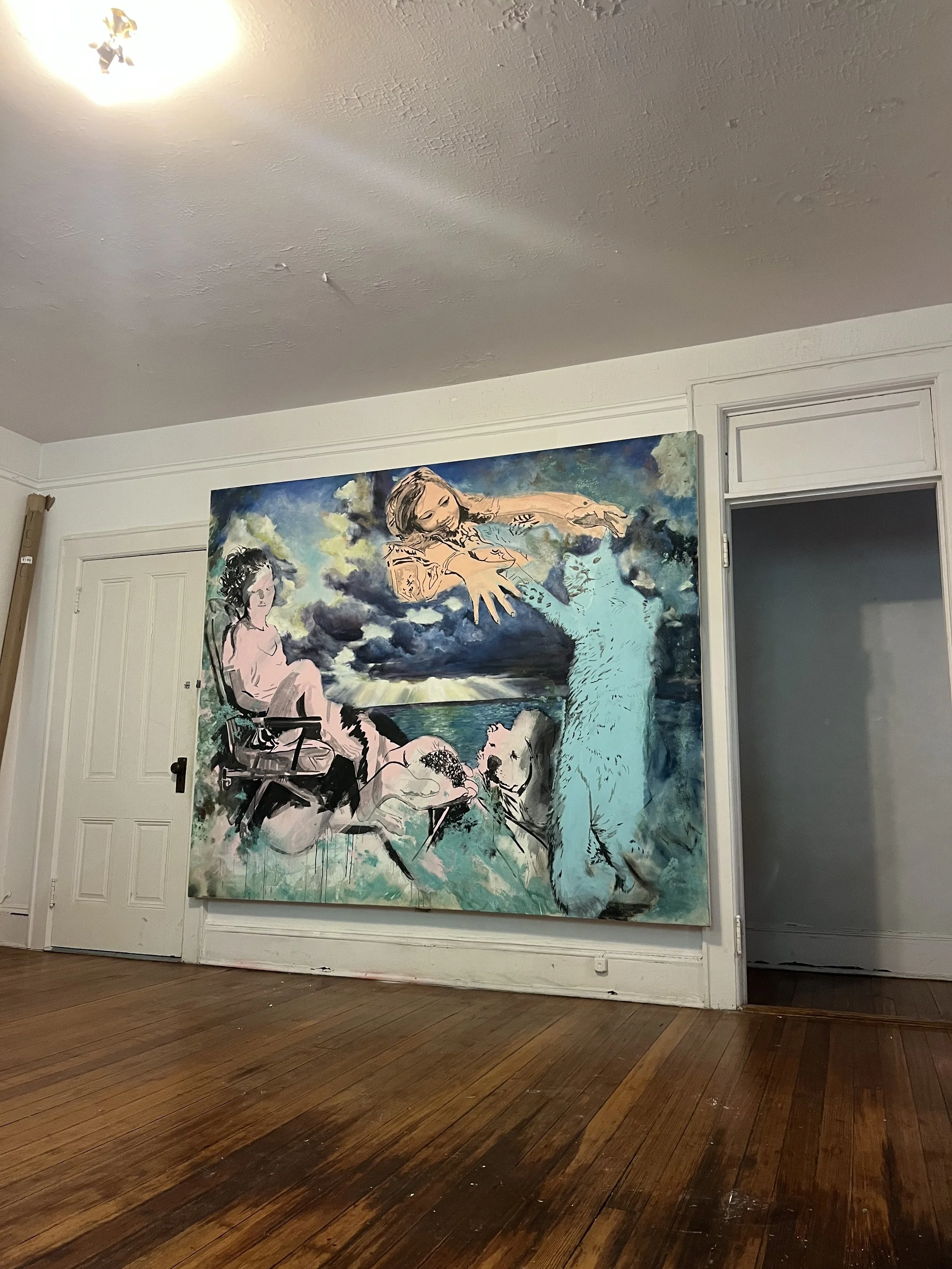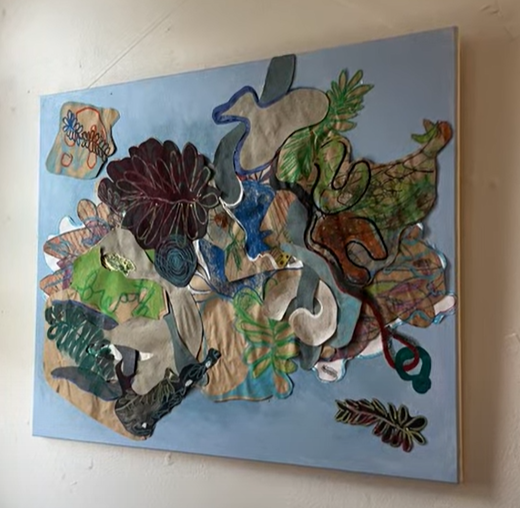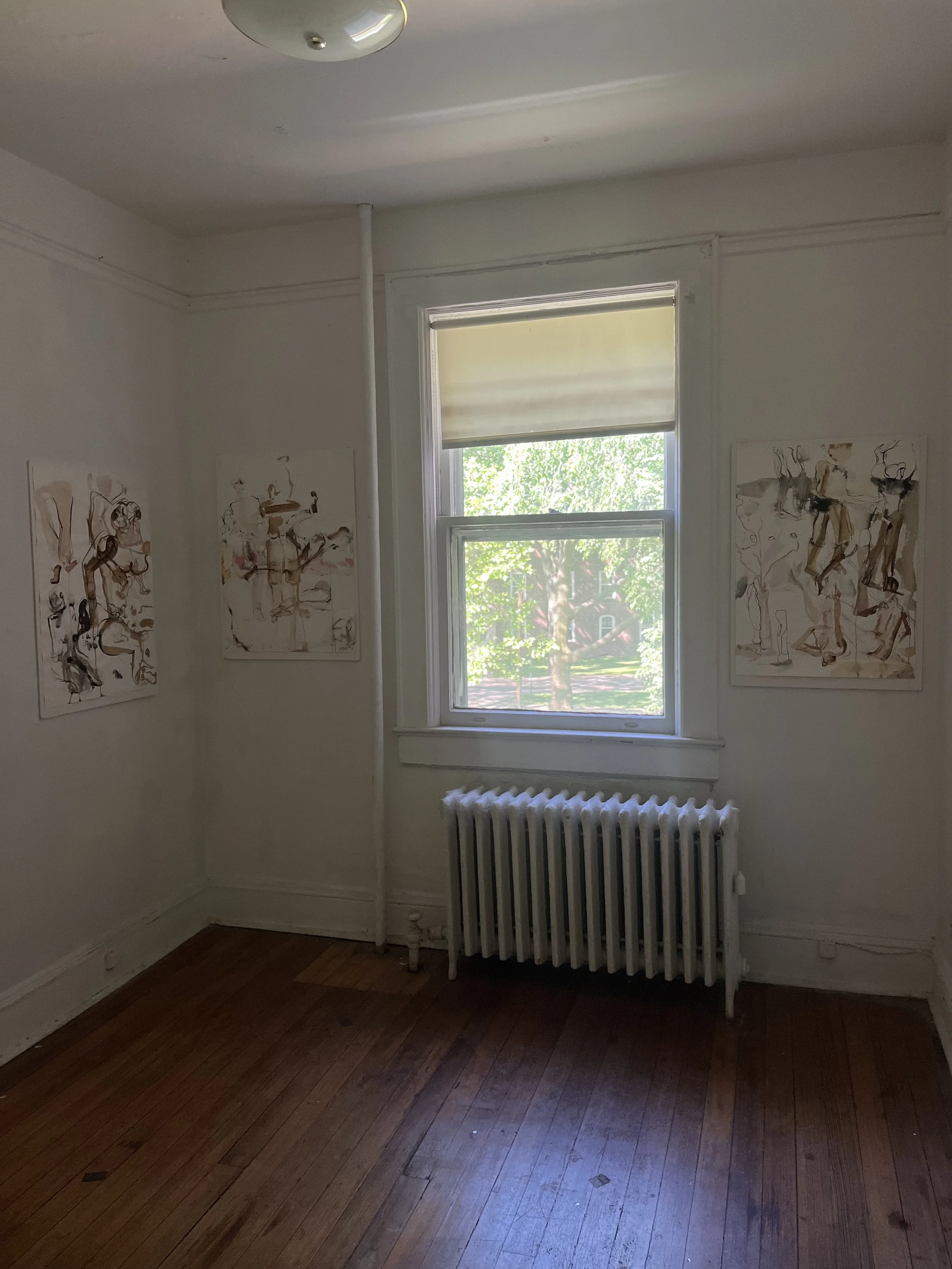Governors Island - Current Installations
“The Air Between Us”
Matthew H James & Claire Unabia
We live in a world strangled by noise yet starved for true connection. “The Air Between Us” seeks to cut through the static — to create a room, a breathing space, a living conversation between cultures, histories, and bodies in motion.
“The Air Between Us” is envisioned as an immersive installation designed to foster a dialogue between diverse cultural traditions, histories, and contemporary experience. At its heart, the project centers on the Hawai’i experience — a place whose cultural identity is profoundly shaped by centuries of indigenous heritage, immigration, global exchange, and ongoing transformation.
In this space, viewers will not merely observe art; they will enter an environment animated by the presence of performers highlighting Hawaiian culture — a tapestry woven from Native Hawaiian roots, Polynesian voyaging, Asian migrations, European influences, and American transitions — offers a vital example of how identities are complex, fluid, and deeply interconnected. As well as performances from the western perspective.
The installation in contrast draws from the atmospheric beauty of Yuan dynasty Buddhist wall paintings and other ancient Asian arts, employing their timeless, transcendent qualities as a visual backdrop to the multiple cultures presented. In order to explore how culture mediates our perception of time, space, and community. The traditional references create a sense of historical continuity, suggesting that the processes of cultural blending and adaptation are not unique to any one place or time, but rather a universal human experience.
The installation offers a contemplative space for viewers to reflect on the rich multicultural legacy of Hawai’i — not as a static narrative, but as an evolving, resilient, and vibrant dialogue that continues to shape our world today. To spark a conversation on multiculturalism as not merely a demographic reality but a living, breathing force that shapes memory, identity, and belonging. “The Air Between Us” invites audiences to experience how layered histories inhabit the present, how different traditions speak to one another across time, and how art can serve as a powerful site for honoring, questioning, and celebrating cultural complexity.
ABRIL AMPARO
Abril Amparo was born in Santo Domingo, Dominican Republic and identifies as an uptown New Yorker raised in Washington Heights, East Harlem and the Bronx and with - more than - a stint in Central Florida . Her visual art explores facets of identity and family ties.
She has an AAS in Fine Arts from Fashion Institute of Technology and a BA in Studio Art from Hunter College. Abril is also a freelance dancer and a dance teaching artist in NYC public schools. She is a company member of Dancers Unlimited.
ABRIL AMPARO / Dancers unlimited
Created by DU NYC company dancer Abril Amparo with other company members. This work was created using blind portraits of each other and visual representations of what symbolized rest and restoration for each of us.
By intentionally facilitating impromptu drawing exercises and keeping play in mind, we collectively created small drawings. We added and took away from each other’s individual sketches, by drawing over and cutting away; the separate pieces combined and composed as one on canvas.
Prioritizing curiosity, humor and expression was important in the process as we centered rest; the culmination of this collage-painting existing through a community of people.
This piece is currently up for auction here
paula Walters Parker
Paula Walters Parker is an artist who loves to experiment with materials and see where they lead her. From everyday foraged pigments and natural textures to bold colors and layered strokes, she lets her art unfold as a playful dialogue, exploring how each element interacts and surprises. Drawing on family stories, music, and daily experiences, her work is a celebration of resilience, curiosity, and connection.
Through what she calls “active imagination,” Parker lets materials take the lead, embracing spontaneity and accidents that bring unexpected beauty. She describes her practice as creating a scenario whereby she relinquishes control to the materials, allowing herself to be attuned to the accidents and opportunity to change in those moments. Her pieces invite viewers to pause, look closer, reflect, and enjoy the richness of what they might discover.
Originally from Kingston, Jamaica, and now based in Brooklyn, Parker studied art in London and New York City and is currently pursuing a Masters in Creative Art Therapy. When she’s not in the studio, she’s sharing her passion for creativity with public high school students in Manhattan.
GENEVIEVE MARTINEZ
From the powerful ancestral roots of Igbo High Priests and North American Native heritage, Genevieve Martinez emerges as an artist whose work honors resilience and transformation. Genevieve speaks of thriving in spite of the “concrete of colonial industrial complex”—growing through each crack in celebration of those who came before, whose survival allows her to create today.
Continuing the evocative project "Queer Love" begun during her recent residency at Bronx Art Space, Genevieve brings her creative vision and practice to the DU OiR House on Governors Island. We can’t wait to see Genevieve bloom and create in our space—honoring ancestors, cultivating love, and forging new artistic paths.
Center for Cultural power: Sonja John
This mural is dedicated to the BIPOC artist disruptors and culture bearers educating, organizing, and most importantly, caring for our communities on the frontlines of the climate crisis. Communities that are struggling right now to live with wildfires and other extreme weather events, rising floodwaters, polluted air and water, and the extractive systems that exacerbate these crises. Not only do we inject life with beauty, joy, insight, meaning and inspiration, we help everyone imagine a better future and metabolize a right relationship with Nature. Culture is Power. Culture moves faster than politics. Culture speaks to our hearts. Artists have the solutions and stories we need.
About the mural, Sonja writes: “The work depicts my sister, Na'amah, and her son Luca, on a beach in West Maui. Their lives have been drastically altered by the Lahaina fires and they have been struggling with everyday transitions like starting school and more existential ones, like stewardship of local water sources as luxury developments, plantations and resorts vie to cut off access. Endangered Hawaiian species in the painting remind us of a key fact: We are Nature defending herself.”












